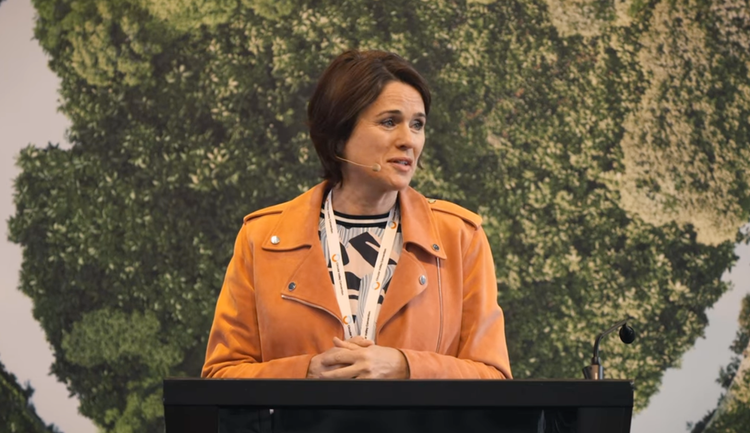Circularity, supplier engagement and the ‘elephant in the room’ of sustainable procurement

Sustainable procurement can mean many different things, but changing trade dynamics, climate priorities and supply chain regulations are forcing companies to revise their approach to purchasing.
For most, sustainable procurement means finding a balance between economic, social and environmental performance. “We’re using that sustainability approach alongside everything else, meaning that this carries equal value in our procurement decisions alongside cost and value, quality of the product and lead time – the three traditional procurement elements. Sustainability is the fourth element that sits alongside and has equal value,” Jamie Shaw, Global Sustainability Director at flooring manufacturer Karndean, explained at a recent CSO Futures webinar.
Finding that balance requires shifting procurement teams’ mindset from cost and compliance to values-based decision-making.
To push this shift, Alice Marmion, who led sustainable procurement at Burberry and Rapha for years and now advises fashion and sportswear companies on their supply chain transformation, likes to start with a workshop to map procurement cycles.
“This is often really eye-opening, because it helps them see who is doing what, and when they could be doing certain things throughout that journey. And it's not necessarily a trade off, but one of the biggest changes that this approach results in is the need for them to be more strategic and to think about things a little bit further ahead. It might take more time to really benchmark a supplier, or to decide when to go forward with a product, purchase or service, and that means they have to build that partnership approach with their partners instead of having a transactional relationship,” she explained during the event.
The good thing is, boards appear to be very much ‘on board’ with the transition: both Shaw and Marmion have had to rein in board members’ expectations around decarbonisation targets and supplier engagement. “Boardrooms often want to move a bit faster, they’re all in, but the reality of a value chain is that things really do take time,” Marmion added.
Maturity models and governance mechanisms
But even once these intentions have changed, “it’s quite easy for the work to get pushed aside”, particularly in an industry as competitive as fashion, she warned. To avoid that, strong governance mechanisms must be put in place, from building equitable contracts with suppliers to integrating red flags in the process.
Setting a supplier engagement target – as many companies do as part of their science-based target-setting process – is a useful step, as long as it comes with a real engagement strategy.
“Anyone can set a target, but I think the key for us is actually laying out that long-term vision for the suppliers, saying’this is what we're trying to achieve’, and then collaborating with them, saying ‘we need your help to try and achieve it’,” said Shaw.
“The way to do that from a supply chain procurement perspective is through a maturity model, because it lays [the target] out in a series of steps that they can follow. And we can also use the model if we move to a new supplier, to give us a base level performance expectation before we actually go into business with them – things like the amount of renewable energy that they're generating on site, for example, to help reduce embodied carbon. I think what's worked well so far.”
The ‘elephant in the room’ of supplier engagement
But of course, sustainability and decarbonisation come at a cost, and this is a conversation that needs to be had with suppliers.
Listing successful supplier engagement strategies, Marmion suggested that “having that early engagement with a supplier, not shifting the goalposts late in the day, and having those difficult conversations with them like ‘who's actually going to be paying for this decarbonisation roadmap’” are all crucial elements.
“When they're having to make these big structural changes across their manufacturing, that obviously comes with a cost, and that needs to be balanced with either a long-term commitment or joining up with other brands. There's lots of different approaches you can take, but the elephant in the room has to be addressed,” she added.
EPR policies and ecodesign
In an effort to improve circularity, several jurisdictions are introducing extended producer responsibility (EPR) mandates – but both panellists warned that these regulations may be insufficient on their own.
“When it comes to extended producer responsibility, it's the right thing: You can't have companies putting products out into the marketplace, and then they take no responsibility for them at the end of life. But I think one of the areas that seems to be lacking and where the regulators don't seem to focus on is the front end: the products need to be designed to be reused and recycled and dismantled, repaired, improved, refurbished, etc. And there's very few industries [that do that] if you only target circularity once the product is finished with, you've got a lack of interest, a lack of economic value, and it becomes far, far harder, I think, to create that kind of circular flow,” warned Shaw.
Marmion agreed, adding that while EPR is “raising the stakes” of end-of-life planning, these policies have variable levels of effectiveness, due to challenges around data harmonisation and lack of infrastructure.
“For organisations now, it’s good to start thinking about supply chain transparency, start thinking about your data and the quality of your data, and how prepared you are, start thinking about budgeting for different labels and for different partners that you might need in different countries where you're selling. But as a whole, there really are some questions over whether EPR will create the circularity outcome that we're wanting.”







Member discussion